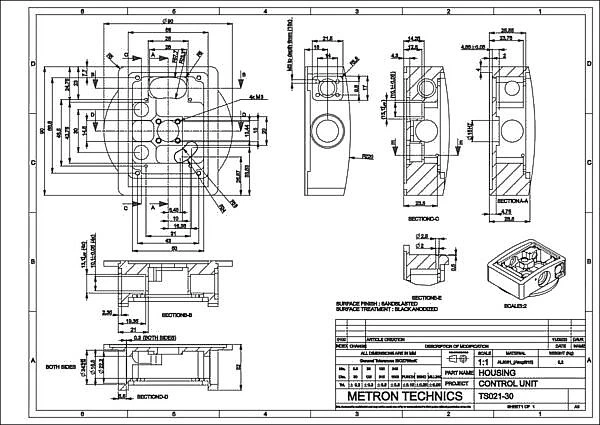In the world of CNC (Computer Numerical Control) machining, the accuracy and quality of the final product rely heavily on the initial technical drawings and 3D files used to program the machine. More specific, these crucial documents serve as the foundation for manufacturing processes. In addition, they and play a vital role in achieving desired results. Let’s delve into the importance of good technical drawings and 3D files for CNC machining.

-
Precision and Accuracy:
CNC machines operate based on precise instructions provided by technical drawings and 3D files. These documents outline the dimensions, tolerances, and specifications required for machining a part. High-quality drawings and files ensure that the machine executes the manufacturing process accurately, resulting in precise and reliable finished products.
-
Time and Cost Efficiency:
Well-designed technical drawings and 3D files help streamline the CNC machining process, reducing the likelihood of errors, rework, and wastage. By providing comprehensive information, such as material selection, toolpaths, and cutting strategies, these documents enable machinists to optimize their workflows, minimize setup time, and avoid unnecessary production delays. Ultimately, this leads to improved efficiency, reduced manufacturing costs, and shorter lead times.
-
Design Intent Preservation:
Technical drawings and 3D files serve as a communication bridge between designers and machinists. They convey the designer’s intent and ensure that the finished part matches the envisioned design. Clear and accurate drawings facilitate effective collaboration and eliminate ambiguity, ensuring that the machinist understands critical features, surface finishes, and assembly requirements. This collaborative approach helps maintain design integrity and prevents costly misunderstandings.
-
Compatibility and Interchangeability:
Good technical drawings and 3D files adhere to industry standards, making them compatible with different CNC machines and software applications. This compatibility allows manufacturers to share files seamlessly across various systems, facilitating collaboration and enabling the transfer of manufacturing data between different stages of the production process. Consistent and standardized files contribute to the overall efficiency and interoperability of CNC machining operations.
-
Complex Geometry and Customization:
CNC machining excels at producing parts with intricate designs and complex geometries. However, machining such parts without clear and detailed technical drawings or 3D files can be challenging and prone to errors. A well-crafted drawing or 3D model provides the necessary information to accurately machine intricate features, curves, angles, and contours. Additionally, it allows for customization, as modifications can be made to the digital file before initiating the manufacturing process.
-
Quality Control and Inspection:
Technical drawings and 3D files play a pivotal role in quality control and inspection procedures. Machined parts can be measured and compared against the dimensions and tolerances specified in the drawings. In this way they ensure adherence to requirements. Moreover, the files enable the use of simulation and verification software. This helps identify potential issues before manufacturing, reducing the risk of errors and scrap. This comprehensive approach to quality control ensures consistent and high-quality production.
In conclusion, the importance of good technical drawings and 3D files for CNC Machining reflects directly in the quality and accuracy of the machined parts. More specific, they enable precision, streamline the manufacturing process, preserve design intent, enhance compatibility, facilitate customization, and contribute to quality control efforts. By investing time and effort into creating accurate and detailed drawings and files, manufacturers can optimize their operations, improve product quality, and deliver exceptional results in the world of CNC machining.